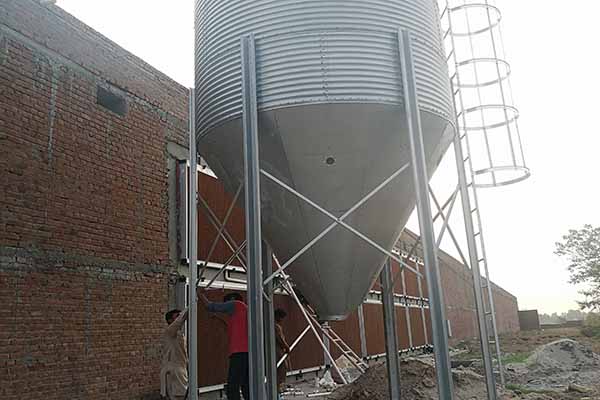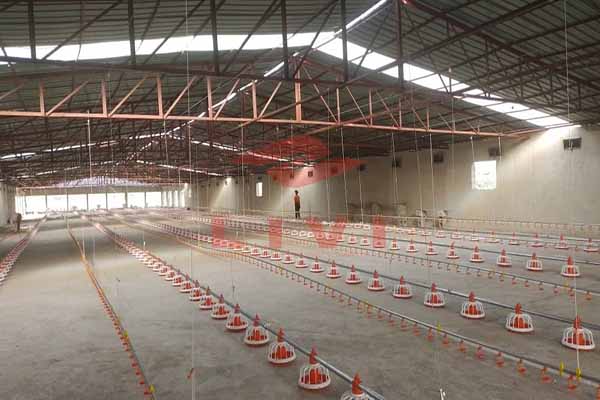How to Start Up a Chicken Farm: A Comprehensive Guide
Time : 2025-07-02
Starting a chicken farm is a rewarding venture that can offer both financial and personal benefits. Whether you’re looking to provide fresh, organic eggs for your local community or to establish a profitable business, understanding the basics of how to start up a chicken farm is crucial. This comprehensive guide will walk you through the essential steps, from planning and equipment selection to building and managing your farm.
1. Research and Planning
Before you dive into building your chicken farm, thorough research and careful planning are essential.
1.1. Market Research
Understand the market demand for chicken products in your area. Consider the following factors:
- Local demand for organic or free-range eggs and meat
- Local competition
- Price points that consumers are willing to pay
1.2. Business Plan
Create a detailed business plan that outlines your farm’s goals, target market, financial projections, and operational strategies. This plan will serve as a roadmap for your chicken farm’s success and is crucial for securing financing if needed.
2. Selecting the Right Location
The location of your chicken farm can significantly impact its success. Consider the following factors when choosing a site:
2.1. Accessibility
Your farm should be easily accessible to suppliers, customers, and workers. Proximity to a major road or transportation hub can be advantageous.
2.2. Environmental Considerations
Ensure the site is free from contamination, has good drainage, and is suitable for raising chickens. Avoid areas prone to flooding or excessive noise pollution.
2.3. Zoning and Regulations
Check local zoning laws to ensure that raising chickens is permitted in the area. Obtain all necessary permits and comply with local regulations.
3. Equipment and Infrastructure
Investing in the right equipment and infrastructure is crucial for a successful chicken farm.
3.1. Chicken Coops and Housing
Select coops that provide adequate space for your chickens, with proper ventilation, lighting, and nesting areas. Consider using automated systems for feeding and watering to enhance efficiency.
3.2. Feed and Water Systems
Choose a reliable feed and water system to ensure your chickens receive the necessary nutrition and hydration. Consider automatic feeders and waterers that can be adjusted to meet the needs of different stages of growth.
3.3. Heating and Cooling Systems
Invest in a heating and cooling system to maintain optimal conditions for your chickens, especially in extreme weather conditions. This will help keep your chickens healthy and productive.
3.4. Equipment and Tools
Ensure you have the necessary tools and equipment for managing your farm, such as egg collection bins, feed storage containers, and cleaning supplies.
4. Chicken Breeds and Genetics
Selecting the right chicken breeds for your farm is crucial for productivity and profitability.
4.1. Egg-Laying Breeds
Choose egg-laying breeds that are known for high productivity and disease resistance. Common egg-laying breeds include Leghorns, Orpingtons, and Rhode Island Reds.

4.2. Meat Breeds
If you plan to raise chickens for meat, select meat breeds like Cornish Cross or White Rock. These breeds grow quickly and have high meat yields.
4.3. Cross-Breeding
Consider cross-breeding different chicken breeds to combine their desirable traits, such as increased egg production or improved disease resistance.
5. Biosecurity and Health Management
Implementing biosecurity measures and maintaining good health management practices is essential for keeping your chickens healthy and reducing the risk of disease outbreaks.
5.1. Biosecurity Measures
Follow biosecurity protocols to minimize the risk of introducing diseases to your flock. This includes isolating new birds, using disinfectants, and maintaining clean and hygienic facilities.
5.2. Health Management
Regularly monitor your chickens’ health and consult with a veterinarian if necessary. Ensure proper vaccination and deworming schedules are followed to keep your flock healthy.
6. Marketing and Sales Strategies
Developing a strong marketing and sales strategy is essential for reaching your target market and ensuring a steady stream of customers.
6.1. Direct Sales
Sell your chicken products directly to consumers through farmers’ markets, farm stands, or home deliveries. This allows you to build a loyal customer base and offer personalized service.
6.2. Wholesale and Distributors
Explore opportunities to sell your chicken products to local restaurants, grocery stores, and distributors. Establishing relationships with potential customers is key to successful wholesale sales.
6.3. Online Marketing
<p Utilize social media, websites, and online marketplaces to promote your chicken farm and reach a wider audience. Provide valuable content, share customer testimonials, and showcase your products to attract new customers.
7. Financial Management
Sound financial management is crucial for the sustainability and growth of your chicken farm.

7.1. Budgeting
<p.Create a detailed budget that outlines your startup costs, ongoing expenses, and revenue projections. Regularly monitor your finances and make adjustments as needed to ensure profitability.

7.2. Financing
Consider seeking financing options such as loans, grants, or investors to help cover your startup costs and operational expenses. Be prepared to present a solid business plan and financial projections to potential lenders or investors.
Conclusion
Starting a chicken farm requires careful planning, thorough research, and a commitment to quality and sustainability. By following this comprehensive guide, you can build a successful and profitable chicken farm that meets the needs of your customers and provides a fulfilling venture for yourself.











